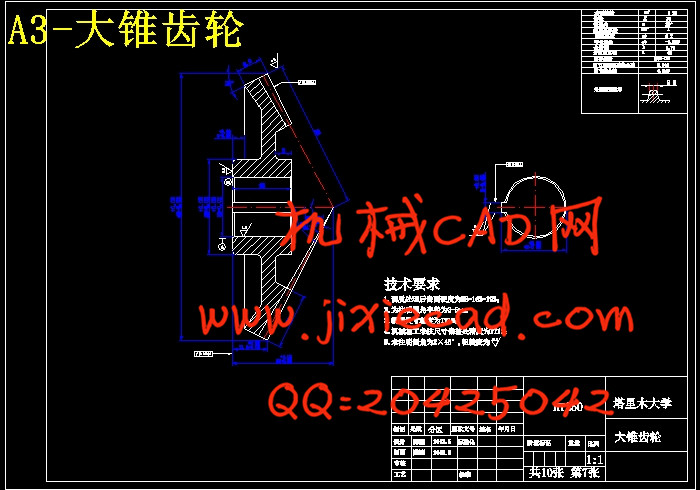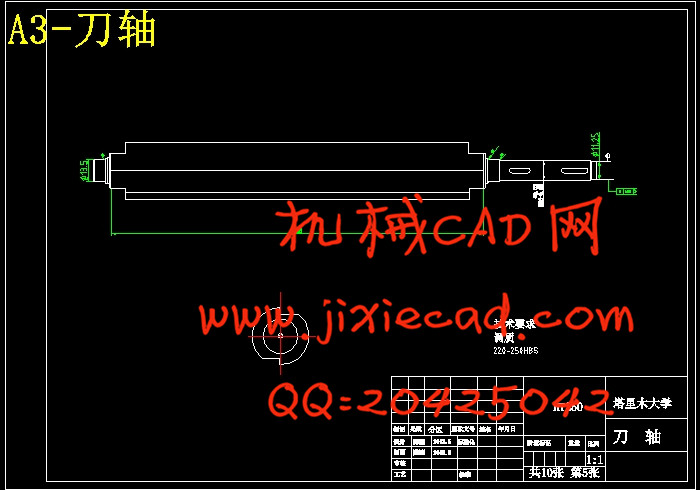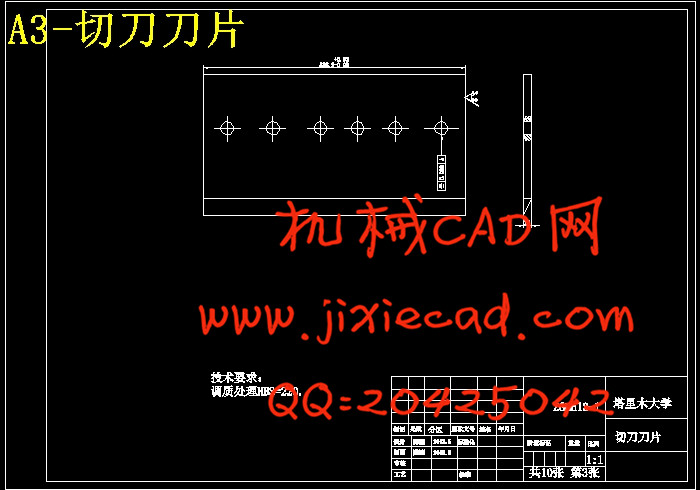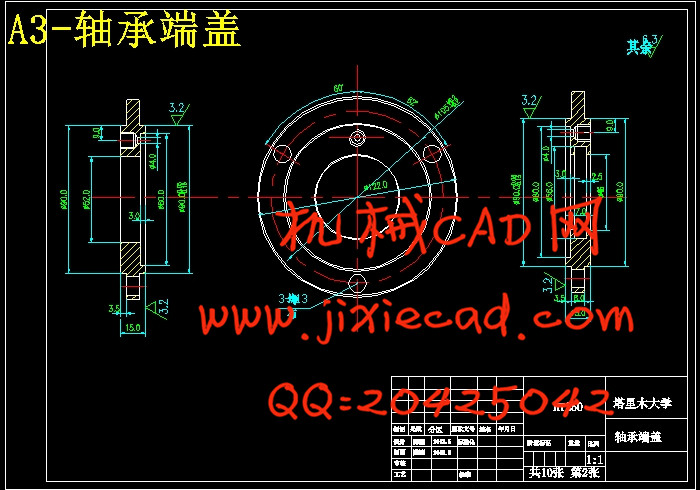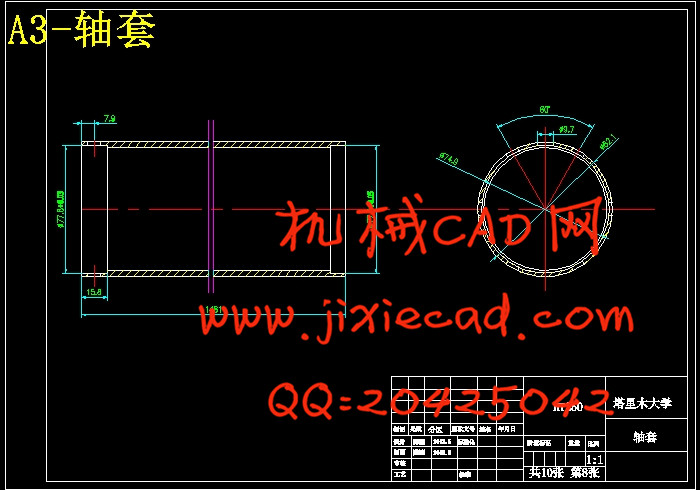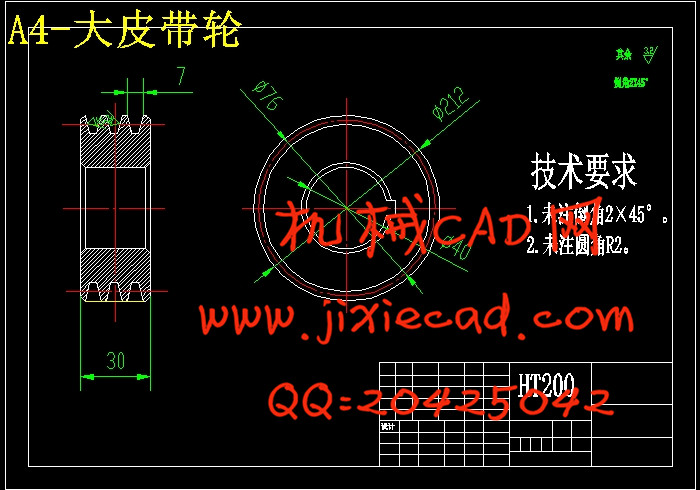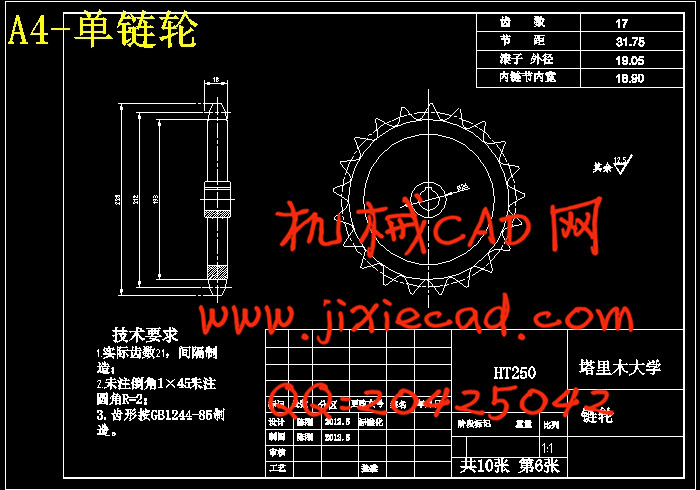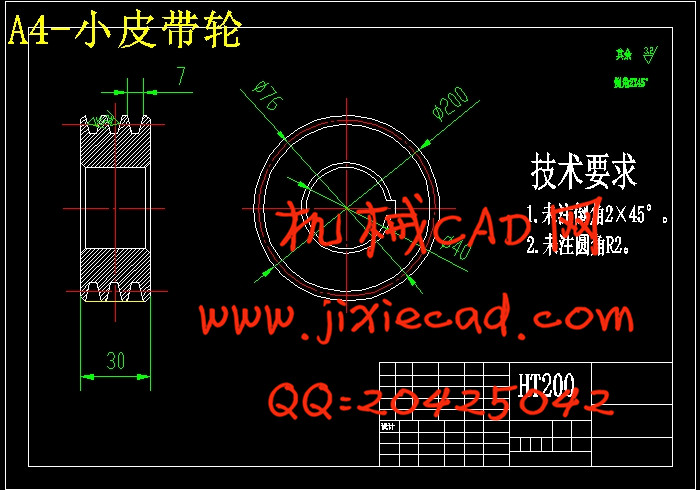设计简介
摘要:针对我国北方地区青贮玉米种植面积大,但收割和后续加工的机械化水平低,造成秸秆利用率低等问题,设计开发了青玉米秸秆收割切碎机械。该机由切割机构、输送机构、切碎机构、抛送机构等组成。该机一次完成秸秆收割、秸秆切碎、秸秆回收等作业。该青贮机主要的研究点在收割和切碎部分。本次设计的青贮机主要就是为了克服国产青贮机的不足,其采用被拖拉机牵引的方式,切割器采用回转的形式,切割的时候棘齿刀围绕一中心点回转运动,降低了功率消耗.棘齿刀固定在刀盘上,与刀盘一体,可以提高刀轴的转速,提高了劳动生产率.其粉碎方式采用动定刀相结合的方式,动刀采用V型,定刀采用长方形,这样可以降低作物在切割时的滑动,使切割更省力,提高了机器的工作效率.
关键词: 青玉米秸秆;收割;切碎
Abstract:In view of China's northern region of planting area silage maize, but the harvest and subsequent processing the mechanization level of low, causing straw low utilization ratio, designing and developing the green corn straw harvest by cutting machine mechanical chopped convey mechanism chopped into institution organization send mechanism etc the machine once completed straw harvest straw cut up straw recovery work the machine of the major research point silage at harvest and cut up the design of the machine is mainly in order to overcome these domestic silage machine is insufficient, its use be tractor traction way, cutter, adopting rotary form, cutting knife around the teeth of a center of rotary motion, reduce the power consumption. The teeth fixed in the knife dish knife, the knife dish and a body, can improve the knife shaft speed, improving labor productivity. Its shattered by the fixed knife way dynamic combination.
Keywords:Green corn straw; crushed straw machine; cut up
1. 绪 论 2
1.1研究的目的和意义 2
1.2 青贮玉米的收获工艺 3
1.2.1直接收获法 3
1.2.2二次收获法 3
1.3 国内外青贮机的发展现状 4
2. 总体设计方案 4
2.1总体方案的制定 4
2.2总体布局设计 6
2.3主要工作部件的选择 6
2.3.1青贮机的切割器的选择 6
2.3.2青贮机粉碎刀的选择 7
2.4 主要工作部件的理论设计 7
2.4.1切割器设计 7
2.4.2 切碎刀的设计 7
3. 主要工作部件的设计计算 8
3.1功率的选择 8
3.1.1收割刀轴消耗功率的计算 8
3.1.2粉碎刀轴功率的计算 8
3.1.3抛扬功率的计算 8
3.2 V带设计 8
3.2.2 选择V带带型 9
3.2.3 确定带轮的基准直径 9
3.2.4确定带的基准长度和传动中心距 9
3.2.7计算预紧力 10
3.2.8计算作用在轴上的压轴力 10
3.2.9 带轮的结构设计 10
3.3 链传动设计 10
3.3.1 选择链轮齿数 10
3.3.2 计算功率 10
3.3.3 确定链条的链节数 10
10
3.3.4 确定链条的节距 10
3.3.5 确定链长及中心距 11
3.3.6 链速的验算 11
3.3.7 验算小链轮的轮毂 11
3.3.8 计算作用在轴上的力 11
3.3.9有效圆周力计算 11
3.4 齿轮传动设计 11
3.4.1选定齿轮的类型、精度等级、材料及齿数 11
3.4.2按齿面接触强度设计 12
3.4.3 按齿根弯曲强度设计 13
3.4.4 齿轮几何尺寸的计算 15
3.4.5验算 15
4. 轴的设计 15
4.1材料的选择 15
4.2割刀轴的设计 16
4.3 输入轴的设计 17
4.4 输入轴的结构设计 17
4.4.1 拟订轴上零件的装配方案 17
4.4.2 根据轴向定位要求确定轴的各段直径及其长度 18
5.其他零部件的设计 20
5.2辅助装置设计 20
5.2.1喂入口的设计 20
5.2.2机壳设计 20
6. 结 论 20
致 谢 21
参考文献 22
关键词: 青玉米秸秆;收割;切碎
Abstract:In view of China's northern region of planting area silage maize, but the harvest and subsequent processing the mechanization level of low, causing straw low utilization ratio, designing and developing the green corn straw harvest by cutting machine mechanical chopped convey mechanism chopped into institution organization send mechanism etc the machine once completed straw harvest straw cut up straw recovery work the machine of the major research point silage at harvest and cut up the design of the machine is mainly in order to overcome these domestic silage machine is insufficient, its use be tractor traction way, cutter, adopting rotary form, cutting knife around the teeth of a center of rotary motion, reduce the power consumption. The teeth fixed in the knife dish knife, the knife dish and a body, can improve the knife shaft speed, improving labor productivity. Its shattered by the fixed knife way dynamic combination.
Keywords:Green corn straw; crushed straw machine; cut up
1. 绪 论 2
1.1研究的目的和意义 2
1.2 青贮玉米的收获工艺 3
1.2.1直接收获法 3
1.2.2二次收获法 3
1.3 国内外青贮机的发展现状 4
2. 总体设计方案 4
2.1总体方案的制定 4
2.2总体布局设计 6
2.3主要工作部件的选择 6
2.3.1青贮机的切割器的选择 6
2.3.2青贮机粉碎刀的选择 7
2.4 主要工作部件的理论设计 7
2.4.1切割器设计 7
2.4.2 切碎刀的设计 7
3. 主要工作部件的设计计算 8
3.1功率的选择 8
3.1.1收割刀轴消耗功率的计算 8
3.1.2粉碎刀轴功率的计算 8
3.1.3抛扬功率的计算 8
3.2 V带设计 8
3.2.2 选择V带带型 9
3.2.3 确定带轮的基准直径 9
3.2.4确定带的基准长度和传动中心距 9
3.2.7计算预紧力 10
3.2.8计算作用在轴上的压轴力 10
3.2.9 带轮的结构设计 10
3.3 链传动设计 10
3.3.1 选择链轮齿数 10
3.3.2 计算功率 10
3.3.3 确定链条的链节数
3.3.4 确定链条的节距 10
3.3.5 确定链长及中心距 11
3.3.6 链速的验算 11
3.3.7 验算小链轮的轮毂 11
3.3.8 计算作用在轴上的力 11
3.3.9有效圆周力计算 11
3.4 齿轮传动设计 11
3.4.1选定齿轮的类型、精度等级、材料及齿数 11
3.4.2按齿面接触强度设计 12
3.4.3 按齿根弯曲强度设计 13
3.4.4 齿轮几何尺寸的计算 15
3.4.5验算 15
4. 轴的设计 15
4.1材料的选择 15
4.2割刀轴的设计 16
4.3 输入轴的设计 17
4.4 输入轴的结构设计 17
4.4.1 拟订轴上零件的装配方案 17
4.4.2 根据轴向定位要求确定轴的各段直径及其长度 18
5.其他零部件的设计 20
5.2辅助装置设计 20
5.2.1喂入口的设计 20
5.2.2机壳设计 20
6. 结 论 20
致 谢 21
参考文献 22



